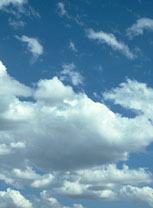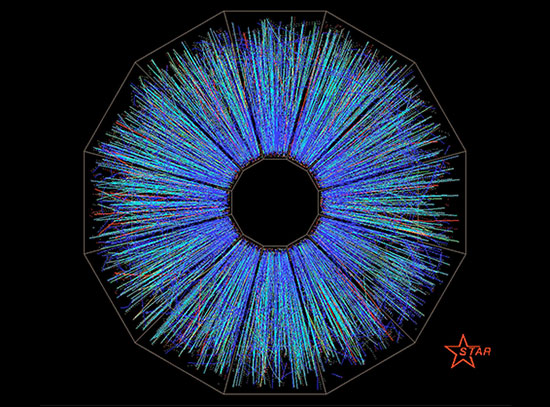Long Island Weather of 2003 - Two Blizzards and Third Wettest Year on Record at Brookhaven Lab
January 8, 2004

Upton, NY - Remember the blizzards of 2003? The first dumped 21 inches of snow at U.S. Department of Energy's Brookhaven National Laboratory between February 16 and 18, and the second brought 20 inches on December 5 and 6.
"While the blizzard of 1978 brought a record 23 inches of snow, the February and December 2003 snowfalls are the second and third largest snow events ever recorded at the Laboratory, and the winter of 2002-03 was the fifth snowiest winter in 56 years," said Brookhaven Lab's meteorologist Victor Cassella. Brookhaven Lab has been recording snowfalls since it was founded in 1947 and has recorded weather statistics since 1949.
The yearly precipitation for 2003 was 63.11 inches, which made it the third wettest year on record at the Laboratory. The wettest year was 1989, with 68.66 inches of precipitation, and 1983 is second wettest with 63.84 inches. June brought a drenching 12.28 inches of rain, making it a runner-up to June 1982, which brought 12.85 inches of rain.
While some 21 tropical storms and hurricanes brewed up in the Atlantic Ocean, no hurricanes hit Long Island in 2003. Local meteorologists kept a close eye on Hurricane Isabel in September, but it hit land in North Carolina. Long Island only got one-quarter inch of rain as a result of Isabel.
The average yearly temperature for 2003 was 50.8°F, which is just 0.7 degrees above the overall average for the past 56 years. The year brought five new high daily temperatures and one new low daily temperature, which occurred in March, June and November. The record low temperature of 4.5°F was set on March 7, beating the record of 8°F set in 1978. Just ten days later, the year's most dramatic new high was set on Saint Patrick's Day, when the temperature soared to 72°F, eleven degrees higher than the previous high of 61°F for that day. Also, August was the hottest on record with an average monthly temperature of 74.6°F, even though no daily temperatures were broken during the month. The previous high monthly temperature for August was 74.3°F, set in 2001.
Cassella's weather prediction for 2003 was on target, since he had predicted a cooler and wetter spring that usual, and more snow than rain in the winter months. Thinking about recent weather patterns, he said, "We've generally been in a cool, wet pattern over the last several years and there is no indication that the pattern will end. It's safe to say that more snowstorms will come our way this winter, and we'll have one of our most snowy seasons. We'll appreciate spring and summer."
2004-10134 | INT/EXT | Newsroom









